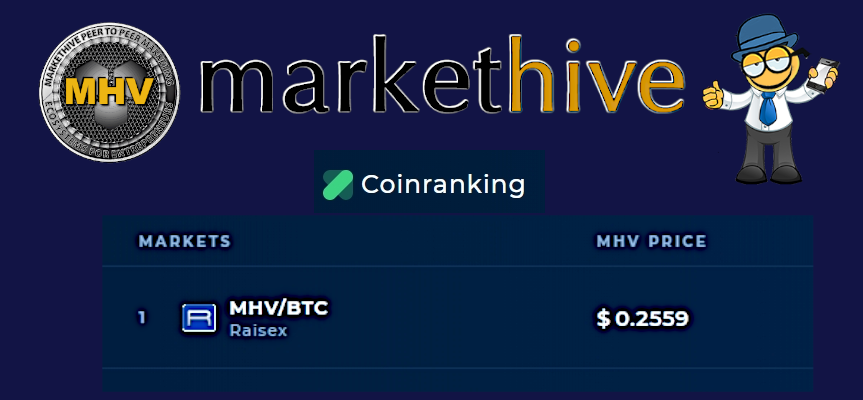High-Frequency Trading Is Newest Battleground in Crypto Exchange Race

The Takeaway
- High-frequency trading (HFT), a longtime and controversial practice in traditional markets, is becoming commonplace in crypto, too.
- Placing trading servers physically close to exchanges’ matching engines can win an edge on speed. This helps HFT firms make large profits in the legacy markets.
- Crypto exchanges such as ErisX, Huobi and Gemini are trying to attract large algorithmic traders with colocation offers.
- Demand for the service is high, but its benefits are a matter of debate, due to the structure of the crypto market.
A handful of cryptocurrency exchanges are rolling out the red carpet for high-frequency traders. Huobi, based in Singapore, and ErisX, in Chicago, have separately begun offering colocation, in which a client’s server is placed in the same facility or cloud as the exchange’s, officials at each exchange told CoinDesk. This allows those investors to execute trades up to a hundred times faster, giving them an edge over the rest of the market. These exchanges join Gemini, which was one of the first crypto firms to offer colocation at a popular data center in the New York area, and is about to expand the option to include a second site in Chicago. Notably, none of these exchanges charges for the service, seeing it as a way to differentiate themselves. “It’s our competitive advantage,” said Andrey Grachev, head of Huobi Russia, the exchange’s Moscow client office.
To be sure, such accommodations remain rare in crypto, which historically was dominated by individual traders and only recently began to draw interest from institutional investors such as hedge funds and family offices. But the exchanges’ moves are a sign that high-frequency trading (HFT), a longtime and controversial practice in traditional financial markets, is slowly entering the crypto sphere. And though “bots” have been present in crypto since the days of Mt. Gox, colocation takes algorithmic trading to a different level. Eric Wall, former crypto and blockchain lead at Cinnober, a financial technology company acquired by Nasdaq,
told CoinDesk:
“It’s big business, everyone I’ve been speaking to that runs an exchange mentioned being approached by Wall Street types with these kinds of requests.”
Most crypto exchanges are not ready to satisfy this demand, Wall said. These are “very new concepts to many retail-focused exchanges with no experience of the traditional world, it seems.”
800K trades a day
In the six months since Huobi opened its Russia office, around 50 clients have taken advantage of its colocation service by locating their servers in the same cloud and using the same domain name service (DNS) as the exchange, according to Grachev. The option allows these clients to make trades 70 to 100 times faster than other users, he said. “One of our clients makes about 800,000 trades a day, and there are more and more such clients.” Unlike many crypto exchanges that use cloud-based servers, ErisX has a hardware matching engine, located in the Equinix data center in Secaucus, New Jersey, said Matthew Trudeau, the exchange’s chief strategy officer.
The same facility houses the matching engines of a range of major traditional exchanges, brokers and trading firms, Trudeau told CoinDesk, so traders that colocated servers in the data center can connect to ErisX’s matching engine there. (The firm launched spot trading in several cryptocurrencies in April and recently obtained regulatory approval for futures.) Gemini, founded in 2014 by Cameron and Tyler Winklevoss, also houses its primary trading platform at Equinix and offers colocation there. The exchange plans to offer another colocation option soon in Equinix’s Chicago data center, where multiple stock exchanges — and their HFT customers — keep their hardware, according to Gemini’s website.
In a statement, Gemini’s managing director of operations Jeanine Hightower-Sellitto said the exchange “offers a variety of connectivity options to suit our customers’ needs. Each option is available to all of our customers free of charge.” Coinbase, the leading U.S. crypto exchange, almost entered the fray, but this year closed down its Chicago division that had been working on services for high-frequency traders, including colocation. At the time, the exchange cited its prioritization of other institutional services. The company declined to comment for this article. (Gemini, which just opened a Chicago office, hired some of Coinbase’s former employees there.)
Controversial practice
All of this invites the question of whether HFT, given its history on Wall Street, could exacerbate problems in the opaque and volatile crypto markets. As depicted in Michael Lewis’s book Flash Boys, algorithmic stock traders placed their servers in the physical vicinity of exchanges’ to execute trades faster than other investors and make profits on arbitrage between markets in fractions of a second. The issue with HFT, as explained by Lewis, is that in a market where some players can perform trades hundreds of times faster than ordinary users, they get an unfair advantage and leave ordinary, non-algorithmic traders with inferior price options.
Another problem with HFT, according to a 2011 report by the International Organization of Securities Commissions (IOSCO), is that it can dramatically increase volatility in markets. In particular, it contributed to the so-called Flash Crash on May 6, 2010, when the prices of many U.S. securities fell and recovered dramatically in minutes, exposing ordinary traders to a higher risk which they couldn’t manage as quickly as HFTs. High-speed trading has led to other technical glitches that cost companies hundreds of millions of dollars, the Federal Reserve Bank of Chicago wrote in 2012, noting that “some high-speed trading firms have equity ownership stakes in certain exchanges.”
Maturing market
However, ErisX’s Trudeau (who, it should be noted, was one of the early employees of stock exchange IEX, the heroes of Flash Boys) argued that high-frequency arbitrage and automated trading, in general, can benefit markets. They are helping to narrow the price spread between different exchanges over time and make markets more efficient – including the crypto market,
Trudeau said, explaining:
“This phenomenon has occurred in other asset classes as trading has become more electronic and more automated. Market makers and arbitrageurs are able to trade more efficiently, which improves price formation, price discovery and liquidity. Arbitrage opportunities may become fewer and more fleeting, which is a sign of a more efficient and maturing market.”
It’s important, however, to check if the exchanges and high-frequency traders strike deals with preferential terms which are not disclosed to the market, he noted. As for ErisX, it “offers transparent, standardized pricing and connectivity options for our customers. All customs are offered the same terms of access and fees,” Trudeau said. For its part, Huobi tries to make sure all users “compete on a level playing field,” said the exchange’s head of global sales and institutional business, Lester Li.
Li told CoinDesk:
“Our users know that we monitor for any abusive trading activity. We also continually remind users that there will always be risks when you trade, that is why we strongly recommend users to trade within their means and be mindful of the risks involved.”
Protecting retail
Still, other exchanges contacted by CoinDesk made a point of saying they don’t do anything special for algo traders. A smaller exchange tailored for institutional clients, LGO Markets, which launched earlier this year, took the opposite approach, deliberately slowing the trading process for everyone, according to CEO Hugo Renaudin.
Before getting matched, the orders are gathered into batches and the hash of every batch gets recorded in the bitcoin blockchain — each batch takes around 500 milliseconds to form, so this serves as a “speed bump” for trades, Renaudin said. As a result, “every trader has the same feedback on the activity of the platform.” Taking a similar stance, Kraken’s vice president of engineering, Steve Hunt, told CoinDesk the exchange doesn’t do anything differently for HFT customers.
“We want all customers regardless of size or scale to have equal access to our marketplace,” Hunt said. Binance, the world’s largest crypto exchange, is not considering offering colocation, account manager Anatoly Kondyakov told attendees of a recent “elite investor” meetup in Moscow. He gave two reasons. First, “we’re trying to protect retail customers,” Kondyakov said, answering a question from the audience. Second, colocation means an official presence in a particular jurisdiction, he said, which Binance is not willing to do at the moment. (Binance is known for its deft regulatory arbitrage.)
Too soon?
Still, others said the crypto market hasn’t caught up with the traditional financial world to the point where offering colocation services to HFT firms would make much sense. “Currently, the crypto market structure is still developing. HFT, in the context of equity and FX markets, does not really exist,” said Wilfred Daye, head of financial markets at San Francisco-based exchange OKCoin. Traders coming into crypto from the traditional markets do ask for colocation, he said, but “the ask is one-off, not a popular ask in crypto,” so OKCoin doesn’t offer this service.
David Weisberger, ?o-founder and CEO of market data platform Coinroutes, has another reason to be skeptical about HFT in crypto: this market is so much more dispersed and volatile that what works with stocks just won’t with bitcoin. The concept of HFT front-running is irrelevant in crypto, Weisberger said, where the prices vary between different exchanges much more than in
traditional markets:
“In futures or equities, with relatively large minimum quote variations, the bid offer spread is often stable with a lot of bids and offers at the same price. In that circumstance the fastest gets to be at the front of the queue whenever the price changes. Those orders at the front of the queue are profitable, while the ones at the back are not. In crypto, the tick size (price variation) is so small, it is easy to be ‘first’ by paying a slightly higher amount, so no need for incredible speed.”
Plus, crypto exchanges are so scattered around the world that there is no point in “being colocated to one exchange and still having to wait seconds for Binance to update,” Weisberger added. The reason there is demand for colocation at crypto exchanges, he concluded, is simply
human nature:
“People always fight the last war. People do what they are used to.”
Article Produced By
Anna Baydakova

Anna writes about blockchain projects and regulation with a special focus on Eastern Europe and Russia. She joined CoinDesk after years of writing for various Russian media, including the leading political outlet Novaya Gazeta. Anna owns a fraction of ETH.
https://www.coindesk.com/high-frequency-trading-is-new-battleground-in-crypto-exchange-race
David https://markethive.com/david-ogden

















